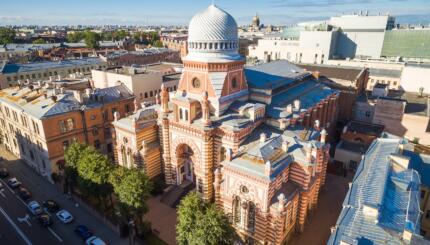Reprinted with permission from A Time for Building: The Third Migration, 1880-1920.
(Johns Hopkins University Press).
Most discussions of the American Jewish experience have centered on New York City. This focus is justified because the great port and immigrant center, as early as 1880, sheltered 33 percent of American Jewry. Outside of New York, too, the American Jewish experience was essentially urban.
By 1920, New York City’s share of American Jews was 45 percent–its Jewish population was greater than the total populations of most American cities. Chicago and Philadelphia together accounted for 13 percent of American Jewry, and seven other large or midsize cities in the East and Midwest accounted for an additional 14 percent. More than 72 percent of American Jews resided in major cities, and their experiences were often strikingly similar from place to place.

Help us keep Jewish knowledge accessible to millions of people around the world.
Your donation to My Jewish Learning fuels endless journeys of Jewish discovery. With your help, My Jewish Learning can continue to provide nonstop opportunities for learning, connection and growth.
But Jewish life in every city was not identical. Could Jewish experience in newer, smaller, Midwest Chicago, for example, have been the same as in older, larger, East Coast New York? Or could even a long-established coastal city like Philadelphia, with its quarter-million Jews making up 11 percent of the city’s population in 1920, produce the same Jewish history as New York, whose over a million and a half Jews accounted for 26 percent of the general population?
More pointedly, did Jews in mid-sized cities have the same experience as Jews in major urban centers? Surely Jewish life in even smaller cities had a different quality and texture. There is much to ask about regional differences too. Jews living in the South or the West and in small towns throughout the United States experienced a different America from those in the large northeastern cities.
The larger the city immigrant Jews settled in, the more likely their community would resemble the Lower East Side of New York: Yiddish-speaking Jews living in large concentrations and working among people very much like themselves. Immigrants in the smaller cities and towns of the interior, on the other hand, were far less dependent on the garment industry and the ethnic economy, generally, and more likely to be self-employed. They were also more dependent on the English language and more likely to have cultural interchange with Gentiles.
It would be wrong, however, to assume that the American interior was a breeding ground for assimilation. Sometimes the opposite was true. The very isolation of the immigrants outside the urban corridors of the Northeast or Midwest, in places like Sioux City, Iowa, or Springfield, Massachusetts, moved them to band together more tightly and to promote Jewish association and consciousness.
Certainly the religious congregation, where one could find comfort and guidance, still had a strong hold on the immigrant who left the East, particularly those in smaller cities and towns. Here Jews were not only inclined to become members of shuls out of their needs for spirituality and continuity but were expected to conform to the American practice of attending religious services “like everyone else."


